The aerospace industry is undergoing profound change. Companies are facing the challenge of having to drastically shorten development cycles, develop more sustainable technologies and reduce costs, all at the same time. In addition, advances in satellite technology require new manufacturing approaches to make systems smaller, lighter and more powerful. While government space programs continue to play a major role here, private players such as SpaceX, Blue Origin and Rocket Lab are driving the commercialization of space travel and setting new standards for efficiency and profitability: Competition has never been so fierce.
more infoPress Releases
-
-

Battery production is at the heart of industrial and climate policy worldwide. Indeed, the demand for energy storage systems for electromobility and stationary applications is growing globally as is the importance of efficient, sustainable and regionally independent battery production.
more info -

In the face of advancing climate change, we drastically need to monitor and understand the various sources and sinks of greenhouse gases worldwide in real time. One focus to accomplish this is to regulate and monitor man-made methane emissions. Laser systems, as developed by researchers at Fraunhofer ILT, offer ways to do exactly this: At the heart of LIDAR instruments, they can precisely determine greenhouse gases in the atmosphere with high spatial and temporal resolution, even from great distances, and do so worldwide.
more info -
More Economic and Climate-Friendly Anode and Cathode Drying / 2025
Laser Drying Technology Takes Leap Forward: IDEEL Project Demonstrates Scalability for Efficient Battery Cell Production
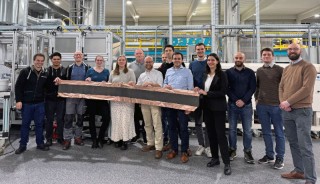
Electrode drying in the roll-to-roll process (R2R) has so far been one of the most cost- and CO2-intensive manufacturing steps in the production of lithium-ion batteries. A laser-based R2R drying process developed as part of the IDEEL research cooperation could change this in the future. It combines conventional, oven-based convection drying with laser drying using high-power diode lasers and reduces the drying time by more than 60 percent while maintaining the same quality of results.
more info -

The Fraunhofer Institute for Laser Technology ILT has a new managing director: On February 17, 2025, Dr. Jochen Stollenwerk took over as acting director of the institute. He succeeds Prof. Constantin Häfner, who headed Fraunhofer ILT from 2019 to 2025 and has now moved to the Fraunhofer-Gesellschaft in Munich as Director of Research and Transfer.
more info -
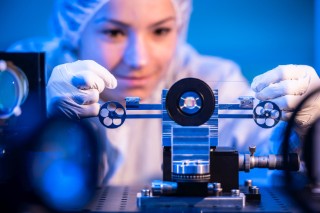
Whether they are needed for medical technology, telecommunications or aerospace: the demand for high-power lasers is increasing in many industrial sectors. Users are focusing on how cost-effective and stable the systems are. The Fraunhofer Institute for Laser Technology ILT has now made significant progress in the development of efficient and stable high-power diode lasers. In principle, it has transferred the writing of fiber Bragg gratings from the world of fiber lasers to that of diode lasers. Dr. Sarah Klein developed the process as part of her dissertation and recently won 3rd place in the prestigious Hugo Geiger Prize.
more info -
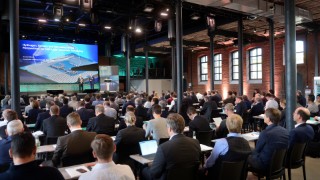
On April 8 and 9, 2025, the UKP workshop will once again open its doors and bring together experts from industry and research at the venue DAS LIEBIG in Aachen. As the most important platform for material processing with ultrashort pulse lasers, this event not only offers visitors the latest insights into technological advances, but also a unique opportunity to discuss the latest applications and solutions.
more info -
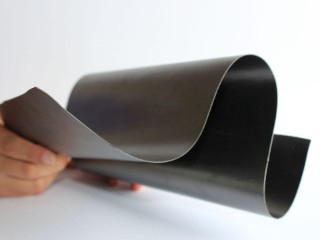
In the HyCoFC research project, industry and research partners are working together to develop bipolar plates for durable, cost-effective and high-performance fuel cells, specifically for heavy-duty applications. The project is using innovative material combinations and the latest laser technologies to meet the strict requirements and demanding conditions in heavy-duty transportation. In this way, HyCoFC not only addresses sustainability in logistics, but also strengthens Germany as a business location and creates forward-looking solutions for the energy transition.
more info -
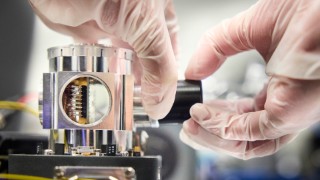
Just in time for the start of UNESCO's International Year of Quantum Science and Technology 2025, North Rhine-Westphalia is setting up the first node for the quantum internet of the future. A team from the Fraunhofer Institute for Laser Technology ILT brought the system developed with TNO in Delft in the Netherlands to Aachen in mid-January to test it here, develop it further and establish the first regional connections to Jülich and Bonn. The project is a milestone on the way to the “Quantum Technology State of NRW.”
more info -
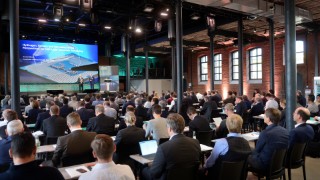
The now firmly established “UKP Workshop“ brings together leading experts in ultrashort pulse laser technology every two years. On April 8 and 9, 2025, the 8th UKP Workshop will take place in Aachen, where specialists will present the latest developments in the field of ultrashort pulse laser technology. Around 20 international speakers will give presentations on practical applications and processes with USP lasers. This time, the focus will be on innovative beam shaping solutions specially optimized for different processes. These solutions open up new possibilities for laser-assisted processing in industries such as electronics, energy storage, glass processing and microelectronics.
more info
 Fraunhofer Institute for Laser Technology ILT
Fraunhofer Institute for Laser Technology ILT